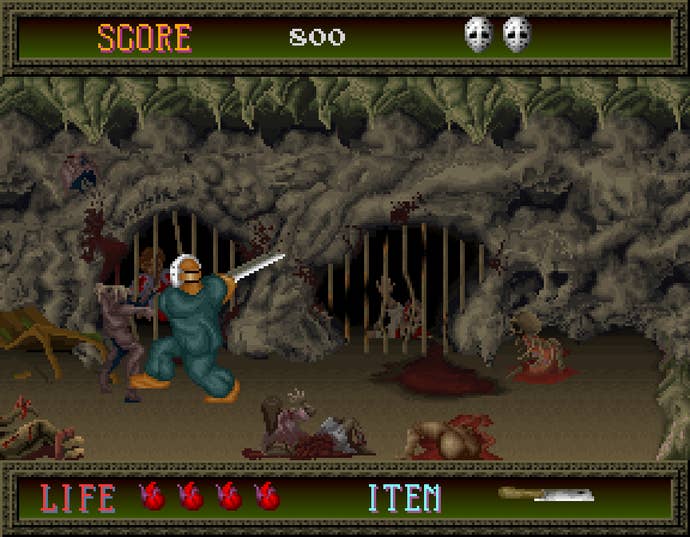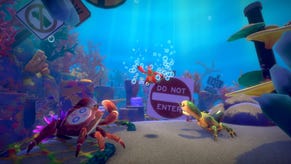The Quest for the Perfect Retro Game Experience
Jeremy looks back on a decade-long mission to relive the classics amidst changing technology, and explores what drives other like-minded enthusiasts.
This article first appeared on USgamer, a partner publication of VG247. Some content, such as this article, has been migrated to VG247 for posterity after USgamer's closure - but it has not been edited or further vetted by the VG247 team.
Originally published July 2015.
"A 500 dollar NES!?"
I've heard this question — or rather, this statement of disbelief — surprisingly often since copping to the fact that I preordered the preposterously highbrow (and high-priced) Analogue NT console several months ago. The Analogue aspires to be the Cadillac of NES consoles, built from salvaged original motherboards, encased in a decidedly Apple-like machined aluminum case, and capable of generating top-of-the-line 8-bit visuals. Unlike an all-in-one emulation station such as the RetroN 5, the Analogue plays games for one system, the NES, and nothing more. With shipping, an RGB cable, and a seemingly brand new Nintendo-manufactured NES controller presumably sourced from some forgotten warehouse somewhere, the Analogue's actual price tag came in closer to $600 than $500... and that's without the optional HDMI-out daughterboard (an additional $70).

On the face of it, the whole idea sounds like an absolute waste of money; why spend so much on a device whose primary function — playing NES and Famicom cartridges — can be served through far less expensive solutions? In fact, I picked up a RetroN 5 last summer, which cost one-fifth as much and can play games from five times as many systems. I'm not exactly wealthy, and $600 is hardly pocket change for me; I saved up for an Analogue for nearly half a year, and even then my finger hovered over the "buy" button for about a month before I finally committed.
The NT definitely represents the far extreme (some would say an unhealthy extreme) of my personal quest to capture the most authentic classic gaming experience possible. By no means is this endeavor some new fixation for me, but it's only been over the past year or so that it's gone from idle, half-hearted effort to focused crusade. Each new component I add to my increasingly tangled game setup provokes a fresh twinge of guilt, a sense of "I really shouldn't" mitigated only by the notion that it's at least somewhat justified by the fact that it's all for work or side projects. And, of course, by knowing that it could be so much worse.
At the edge of the rabbit hole
There's nothing particularly unique or unusual about my drive to create an optimal gaming experience for myself, nor in my discovery that it doesn't come cheap. The money I've invested in order to be able to play NES games in beautiful, flawlessly executed, nearly lag-free 1080p is chump change compared to what the hardest of hardcore PC enthusiasts spend on linked, top-of-the-line graphics cards and 4K monitors. And I can definitely take comfort in knowing that the NES, as a dead platform, won't require new equipment every couple of years to remain at the bleeding edge of tech the way PC gaming does.
And really, classic game fanaticism can go so much deeper (and cost so much more) than the relatively basic target I've set for myself. My goal is simply to run original console software (NES, yes, and others as well) on an LED television with minimal lag and the ability to capture HD footage for video production. Being in the games press, I need to remain something of a generalist, too; my setup also needs to be flexible enough to work with PlayStation 4 and Xbox One games. That's my safety net to keep from going off the deep end, really — that and space. When it comes to retro games, the more specific an obsession becomes, the more expensive the act of feeding it can be.
But why bother? That seems to be a prevailing sentiment when the topic of any sort of big-ticket retro investment is broached online. After all, all of these games can be played through emulation for free; matters of legality aside, why not just load up MAME or RetroArch and call it a day?
The answer is that, for many enthusiasts, emulation simply isn't good enough. It's a handy temporary solution, a great way to get a sense of a game. But to recapture the true, authentic experience of playing a game on its original hardware, with its original quirks, on the medium it was designed for — emulation simply can't handle that... at least not yet, anyway. Even great emulation still amounts to an approximation, and the act of faking it introduces new quirks and flaws that didn't appear in the original game on its intended hardware. While emulation enables fantastic new features for classic games, including save states, rewinds, online multiplayer, and more, these perks can't overcome the failings (sometimes subtle, sometimes quite obvious) that results from an emulated game.

In fact, for the most serious players, emulation literally isn't an option. Caitlin Oliver, an active competitor for the world record in Namco's arcade classic Splatterhouse, explains: "When discussing active competition for world record scores, it tends to be original hardware or bust," she says. "Most emulated versions have their own (separate) score boards. Some individual competitions may allow you to use MAME or other emulators to set scores, but that is to be determined by the person running the event and doesn't apply to official record keeping. There are too many variables to consider that can make differences in the outcome of the game, and even minor differences like that can end up making a world of difference."



.jpg?width=291&height=164&fit=crop&quality=80&format=jpg&auto=webp)





